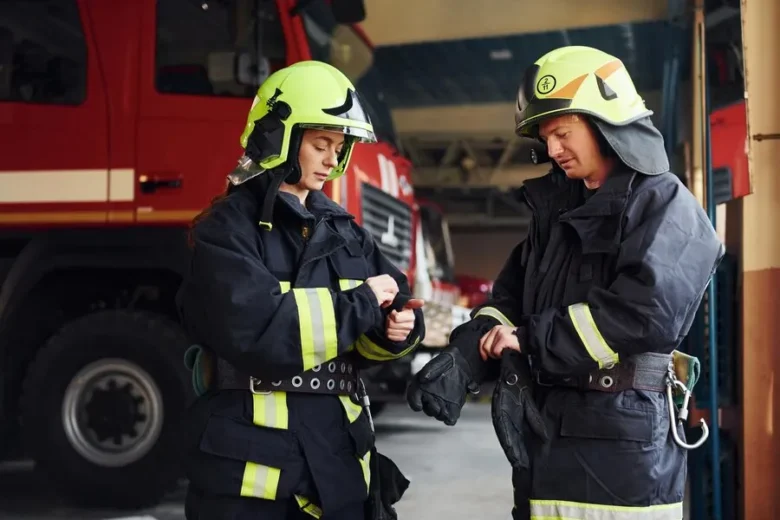Key Takeaways
- Understanding fire safety and emergency medical training can substantially improve emergency response times and outcomes.
- Fire safety strategies and EMT training are critical skills for certain professions and beneficial for many subsets of the general public.
- Advancements in technology and updated safety practices play a vital role in the ever-evolving fields of fire safety and emergency medical services.
The Fundamentals of Fire Safety
Fire safety remains a paramount concern in both personal and professional settings, with the potential to save lives and prevent significant property damage. The fire risk assessment is at the heart of adequate fire safety, an evaluative process that identifies possible hazards within a space. This procedure is crucial for understanding where fires might originate and how they could spread, enabling proactive measures to eliminate or control these risks. Such assessments are not just regulatory requirements but are essential practices for any space where people live or work.
Once risks are identified, implementing robust fire prevention strategies becomes imperative. These strategies include regular maintenance checks, adherence to safety protocols, and educating stakeholders on behaviors that mitigate risk, such as proper waste disposal and controlled use of electrical devices. Beyond behavioral adjustments, having the right equipment, such as smoke detectors and fire extinguishers, enhances readiness. These tools are the first lines of defense, ensuring fires can be detected and mitigated early.
The Role of Emergency Medical Technician (EMT)
Emergency Medical Technicians (EMTs) are integral emergency response team members, often serving as the bridge between the initial call for help and hospital care. EMTs are specially trained to perform many tasks necessary in urgent medical situations. They undergo rigorous training to conduct patient assessments, perform life-saving procedures like CPR, use emergency medical equipment proficiently, and emotionally support patients and families in distress.
One of the challenges EMTs face is the necessity of making quick yet accurate decisions in high-pressure situations. Their daily responsibilities extend beyond the clinical; they include managing the chaos of emergency scenes and preparing patients for safe transport to medical facilities. This job requires a unique blend of compassion, diligence, and authority, ensuring patients receive optimal care before they reach the hospital. For deeper insights and professional training opportunities in these areas, consider exploring EMT training courses Texas, which provide comprehensive guidance in fire and emergency scenarios.
Training Programs and Their Importance
Hands-On Training Benefits
Effective training programs form the backbone of fire safety and EMT proficiency. Through hands-on exercises, participants experience tangible scenarios that closely mimic real emergencies. This experiential learning method is invaluable, as it builds experiential knowledge and hones critical thinking and situational awareness among trainees. By simulating high-stakes environments, participants can practice and refine their responses to emergencies, ensuring they perform effectively when real situations arise.
Continuous Learning
In a field that evolves alongside advancements in technology and medicine, continuous learning is not merely optional but essential. Professionals are encouraged to attend regular refresher courses and training updates to stay atop industry standards and innovations. Ongoing education opportunities often introduce new techniques and incorporate cutting-edge technologies such as virtual reality, which simulates diverse medical scenarios for an immersive learning experience.
Leveraging Technology in Fire Safety and EMT Training
Technology continues to be a game-changer in fire safety and EMT training, enhancing the quality of education and operational readiness. Virtual reality stands out as a revolutionary tool, providing realistic, interactive environments where trainees can practice responses to various emergency scenarios without physical risk. This approach delivers the dual benefits of safety and experiential engagement, allowing learners to interact with potential emergencies.
Technology isn’t confined to training in practical settings but extends to the field. Innovations such as innovative medical kits enable EMTs to deliver more effective care with precision and efficiency. In contrast, advanced fire safety equipment, such as thermal imaging cameras, allows firefighters to navigate and assess fire situations more accurately. These technological advancements underline a shift towards more intelligent, data-driven emergency responses.
Real-Life Case Studies
Case studies provide compelling evidence of the efficacy of training programs. Fire departments integrating modern training approaches report significant improvements in emergency response outcomes. For instance, enhanced readiness and training drills have been linked to quicker and more effective incident resolutions, critical during high-stakes emergencies where seconds count.
Similarly, numerous success stories attest to the life-saving interventions well-trained EMTs perform. In situations such as cardiac arrests or traumatic injuries, EMTs’ swift actions and expert judgments have preserved lives and prevented further medical complications. These instances reaffirm the importance of high training standards to prepare professionals to meet real-world challenges.
Preparing for the Future
Evolving Fire Safety Protocols
As the landscape of safety protocols continually evolves, so must the practices of those in fire and emergency services. New regulations and procedural updates frequently arise from in-depth research and technological innovations, necessitating awareness and adaptation. Organizations such as the National Fire Protection Association offer valuable resources for keeping current standards up-to-date, ensuring compliance, and elevating safety practices.
Adaptation to Change
Adaptability is critical in any profession, especially with unpredictable elements such as fire safety and emergency medical response. Embracing new training methodologies and adjusting to updated guidelines ensures that fire safety officers and EMTs maintain high preparedness. This preparedness is crucial in safeguarding communities and responding efficiently to emergencies, emphasizing the importance of continued professional development.
Final Thoughts
Fire safety and EMT training are vital components in cultivating a safe society. Beyond mere occupational requirements, they represent a personal commitment to safety and preparedness. The ripple effect of these practices is profound, offering peace of mind and heightened security for individuals and their communities. By prioritizing ongoing education and adopting innovative solutions, both specialties can continue to evolve, enhancing their capacity to save lives and protect assets in moments of critical need.



